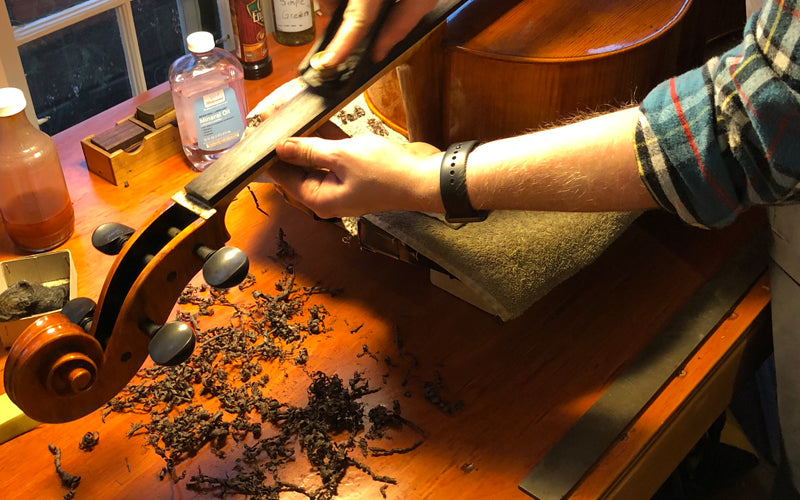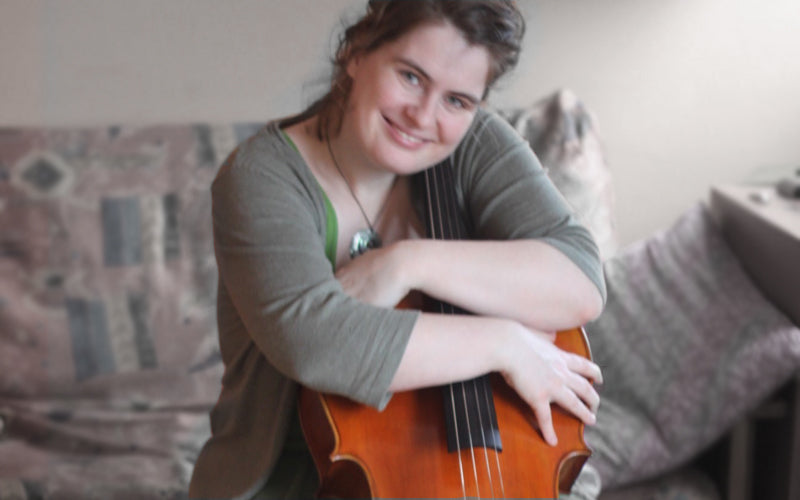Anatomy of a Violin, Viola, and Cello (Parts Diagram)
|
 |
 |
Anatomy of a Violin, Viola, and Cello (Parts Diagram)
Understanding the anatomy of your string instrument is essential for proper care, maintenance, and appreciation of these magnificent musical tools. Whether you're a beginner student, parent of a young musician, or seasoned player, knowing each component helps you make informed decisions about purchases, repairs, and upgrades.
The String Instrument Family: Shared Architecture
All members of the violin family share fundamental design principles that have remained unchanged for centuries. The violin, viola, and cello each feature the same basic construction: a hollow wooden body that amplifies sound, four strings stretched across the body, and a sophisticated system of components that work together to create beautiful music.
Key Materials Used:
- Top (Soundboard): Premium spruce wood for optimal resonance
- Back and Sides: Maple wood for strength and tonal qualities
- Fingerboard: Ebony for durability and density
- Fittings: Ebony, boxwood, or synthetic materials
Violin Parts and Components
External Components
Scroll and Pegbox The scroll is the decorative carved element at the top of the instrument, showcasing the luthier's artistry. The pegbox houses the tuning pegs, which adjust string tension for proper tuning. Quality pegs should turn smoothly and hold tuning reliably.
Neck and Fingerboard The neck supports the fingerboard, where musicians 'stop' strings to create different pitches. A properly shaped neck ensures comfortable playing, while the fingerboard's curvature affects string spacing and playability.
Strings Modern violin strings come in steel, synthetic core, or gut varieties. Each type offers different tonal characteristics:
- Steel strings: Bright, stable tuning
- Synthetic core: Warm tone, stable
- Gut strings: Traditional, complex tone
Bridge This crucial component transfers string vibrations to the soundboard. Bridge placement and height directly affect playability and tone quality. Professional setup ensures optimal bridge positioning and fit.
Sound Holes (F-holes) The distinctive f-shaped openings allow air movement and contribute to the instrument's acoustic properties. Their precise cutting affects both volume and tonal response.
Tailpiece and Fine Tuners The tailpiece anchors the strings at the bottom of the instrument. Fine tuners provide precise pitch adjustments, especially useful for steel strings.
Internal Components
Sound Post This small wooden dowel inside the instrument acts as the "soul" of the violin, transmitting vibrations between the top and back plates. Proper sound post adjustment requires professional expertise.
Bass Bar Glued to the underside of the top plate, the bass bar reinforces the soundboard and distributes vibrations. Its precise carving and placement affect the instrument's responsiveness.
Viola Anatomy Explained
The viola shares identical anatomy with the violin but in larger proportions. This size increase creates the viola's distinctive deeper, warmer tone that fills the crucial middle voice in orchestral and chamber music.
Size Variations Unlike violins, violas come in various sizes, typically ranging from 15" to 17" body length. Players choose based on:
- Arm length and finger span
- Desired tonal characteristics
- Playing style and repertoire
String Differences Viola strings are tuned a fifth lower than violin (C-G-D-A vs. G-D-A-E), requiring:
- Thicker string gauges
- Adjusted bridge and sound post setup
- Different bow technique considerations
Cello Parts Diagram and Functions
The cello maintains the same basic anatomy while dramatically scaled up, requiring additional components for stability and playability.
Unique Cello Components:
Endpin This adjustable spike anchors the cello to the floor, allowing proper playing angle and height adjustment. Carbon fiber endpins offer superior strength and resonance transfer due to light weight.
Extended Neck Proportions The longer string length creates the cello's rich bass register but requires:
- Wider fingerboard spacing
- Different left-hand technique
- Specialized bow grip and arm motion
Reinforced Construction Cellos require additional internal bracing to handle string tension, including:
- Reinforced corner blocks
- Stronger linings throughout the rim
- Carefully graduated plate thickness
Purfling: The Decorative Protection
The thin inlaid strips around the instrument's edges serve both aesthetic and functional purposes:
- Protection: Prevents edge cracks from spreading
- Identification: Quality purfling indicates proper construction
- Beauty: Adds visual elegance to the instrument
Genuine purfling consists of three strips: ebony-maple-ebony, while laminated instruments often feature painted lines (and StringWorks never has laminated instruments)
Professional Setup: Why It Matters
Every component must work in harmony for optimal performance. Professional setup includes:
Bridge Fitting and Positioning
- Proper height for comfortable playing
- Correct curvature perfectly matching shape of instrument top
- Precise positioning for optimal tone
Sound Post Adjustment
- Millimeter-precise placement inside the instrument
- Seasonal adjustments for wood movement
- Tonal balancing across all strings
String Height Optimization
- Nut slot cutting for proper string spacing
- Fingerboard planing for even action
- Tailpiece positioning for optimal string angle
Maintenance and Care Tips
Daily Care
- Wipe rosin dust after each practice session
- Store in proper case with adequate humidity
- Loosen bow hair when not playing
Professional Maintenance
- Annual setup checks with qualified luthier
- Bridge repositioning as wood settles
- Sound post adjustments for seasonal changes
Warning Signs Requiring Attention
- Buzzing strings or wolf tones
- Difficulty tuning or staying in tune
- Visible cracks in wood or varnish
- Bridge leaning or warping
Choosing Your Next Instrument
Understanding anatomy helps you evaluate instruments effectively:
Student Instruments
- Solid wood construction preferred over laminated
- Proper setup more important than expensive materials
- Room for growth in sound and playability
Intermediate Upgrades
- Hand-carved components vs. machine-made
- Tonal complexity and projection improvements
- Enhanced playability in higher positions
Professional Instruments
- Individual character and voice
- Exceptional materials and craftsmanship
- Investment potential and resale value
The StringWorks Difference
Our instruments receive meticulous setup attention to ensure every component functions optimally. From student rentals to professional instruments, we understand that proper anatomy and setup make the difference between frustration and musical joy.
Our Setup Process Includes:
- Bridge fitting and positioning by the most experienced technicians
- Sound post adjustment for optimal tone balance
- String height optimization for comfortable playing
- Quality string installation with proper winding technique
- Comprehensive playability testing
Frequently Asked Questions
Q: How often should my instrument be professionally serviced? A: We recommend annual checkups, with additional visits if you notice changes in sound or playability.
Q: Can I adjust my own bridge or sound post? A: These adjustments require specialized tools and expertise. Improper adjustment can damage your instrument.
Q: What's the difference between carved and pressed sound holes? A: Carved f-holes (hand-cut) typically produce better acoustic results than pressed (machine-cut) openings found in factory instruments.
Q: Why does my instrument sound different in winter vs. summer? A: Wood responds to humidity changes, affecting all components. Professional seasonal adjustments optimize performance year-round.
Ready to experience the difference proper setup makes? Explore our carefully prepared instruments, each receiving the full StringWorks setup treatment. Whether you're renting for school orchestra or investing in your forever instrument, we ensure every component works in perfect harmony.
[Browse Our Violin Collection →] [Explore Our Violas →]
[Shop Quality Cellos →] [Learn About Our Rentals →]
Questions about instrument anatomy or need personalized recommendations? Our expert team is here to help – contact us today!
Updated 8/7/25




